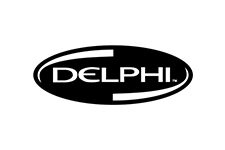Vector Automation was contacted by a Tier One Supplier to the Delphi Corporation regarding automating the lacquering of the windings used on alternators being supplied to Delphi.
The present form being used for the lacquering of the winding was to hang the winding on an overhead conveyor that was over 100 feet long. This conveyor would pass the winding thru a blast furnace so as to heat the winding up to a certain temperature. Once that temperature had been obtained, the conveyor would come down so that the winding would enter into a tank of lacquer and be coated.
Alternator windings had been done this way for years and it worked but the associated cost to do this process this way had come to an end. One of the biggest reasons for some kind of change was the requirement for a secondary operation to remove the excess lacquer on the laminations which is part of the winding itself. This excess lacquer made it necessary to remove the lacquer on the lamination so as to be able to assemble the aluminum covers over the winding assembly and rotor. There were large costs involved in the lacquer removal process and it needed to be eliminated.
Vector’s solution to the problem at hand was to use a new technology called an inverter inductive power source.
Vector’s solution was to use a rotary table which had ten (10) work stations on top of it. The employee would put a winding on station #1. The table would index every ten seconds. Once the first winding indexed out of the way then another winding was put on station #1. While this was happening the first winding would have transferred to station # 2 where it would be heated via the inverter power source for the ten second dwell time. Then it would proceed to station #3 where it would get another ten second transfer of heat from the second inverter power source. One the next index it would move to station #4 where an EFD dispenser would dispense lacquer on the right and left sides of the laminations and the lacquer would be sucked up via capillary action into the copper windings and not getting on the steel lamination resulting in the reduction of the secondary cleaning operation so that assembly could happen after this process. Please realize that for every ten seconds a new part was placed on station # 1.
This sequence of operations resulted in a finished part being done every ten seconds after the first ten stations had been filled.
This project had many benefits over the old system:
- Reduction of all secondary operations prior to final assembly.
- Reduction of natural gas used in the blast furnace.
- Reduction in floor space. Went from 2500 square feet to 100 square feet.
- Production rate tripled.
- Indirect material costs were reduced by 50%.

